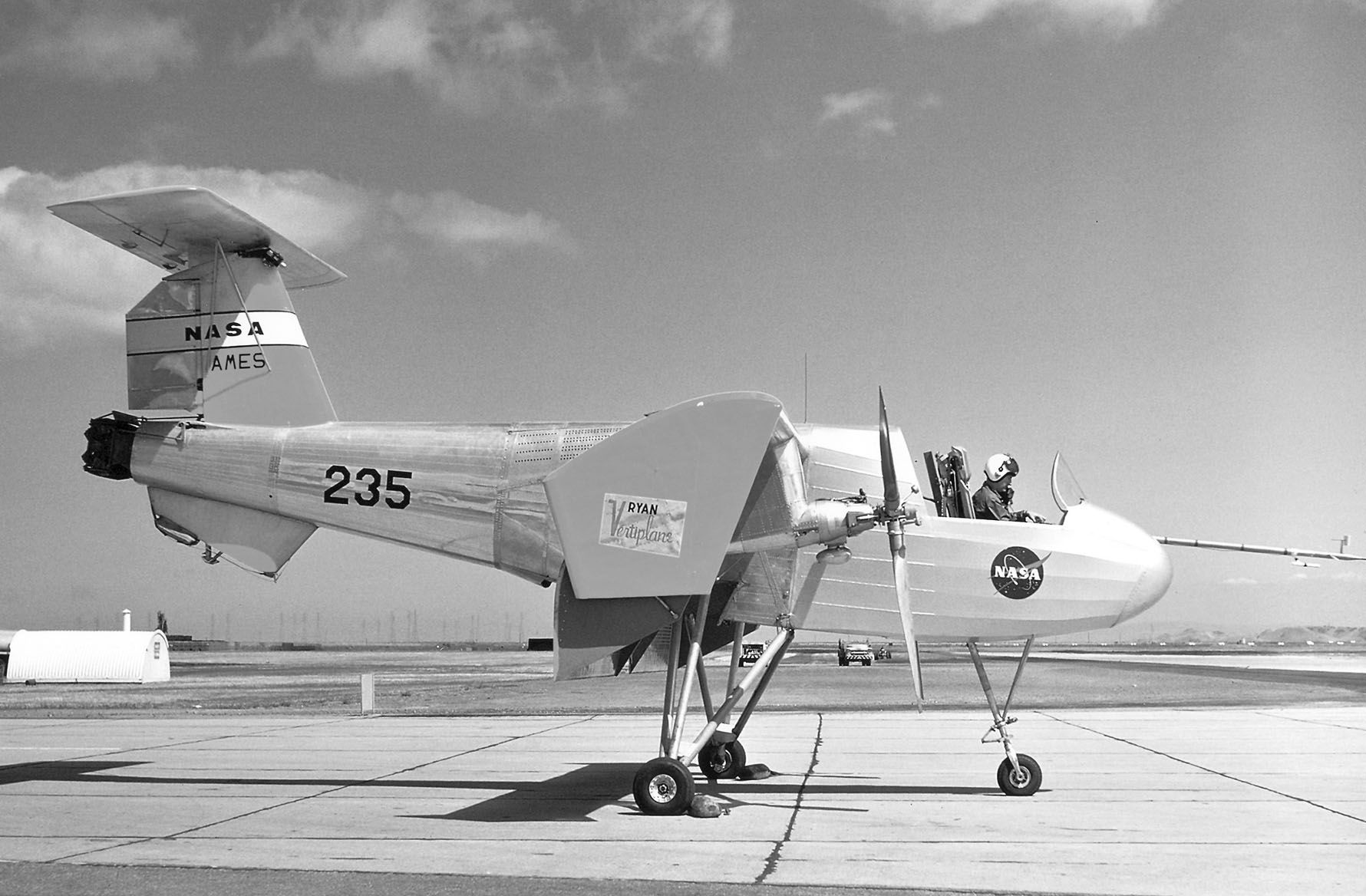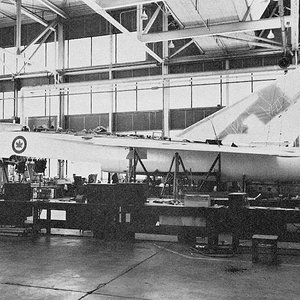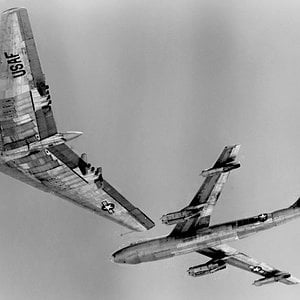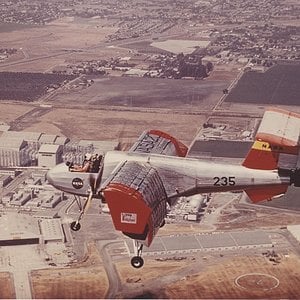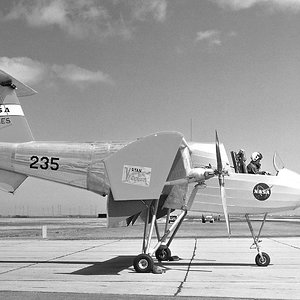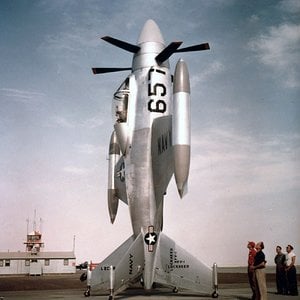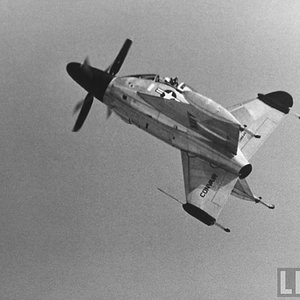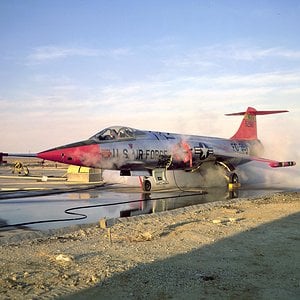Navigation
Install the app
How to install the app on iOS
Follow along with the video below to see how to install our site as a web app on your home screen.
Note: This feature may not be available in some browsers.
More options
You are using an out of date browser. It may not display this or other websites correctly.
You should upgrade or use an alternative browser.
You should upgrade or use an alternative browser.
Design and development[edit]
The VZ-3 was a simple proof-of-concept experimental aircraft using blown flaps to achieve a short or near vertical take-off. It was a high-wing monoplane powered by an Avco Lycoming T53 turboshaft engine located inside the fuselage driving two large-diameter propellers mounted, one on each wing. It had a T-tail and originally a tailwheel fixed landing gear. It had wide-span double retractable trailing-edge flaps, these were extended into the propeller slipstream for takeoff. To enable control while in the hover it had a universally-jointed jet-deflection nozzle at the rear of the aircraft. It was later modified with a nose-wheel landing gear.
The VZ-3 could make a near-vertical takeoff within 30 ft (9m) at a speed of 25 mph (40 km/h) and the aircraft could be put into the hover up to a height of 3,700 ft (1,100 m).
Operational history[edit]
The aircraft conducted a 21-flight test program for the United States Army until it crashed in 1959. It was rebuilt with an open cockpit lengthened fuselage and handed over to NASA for further trials. Following retirement the VZ-3 is on display at the United States Army Aviation Museum.[1]
Operator[edit]
United States
United States Army
NASA
Specifications[edit]
Data from Jane's 1976.[2]
General characteristics
Crew: One
Length: 27 ft 8 in (8.43 m)
Wingspan: 23 ft 5 in (7.14 m)
Height: 10 ft 8 in (3.25 m)
Gross weight: 2,600 lb (1,179 kg)
Powerplant: 1 × Avco Lycoming T53-L-1 turboshaft, 1,000 shp (750 kW)
The VZ-3 was a simple proof-of-concept experimental aircraft using blown flaps to achieve a short or near vertical take-off. It was a high-wing monoplane powered by an Avco Lycoming T53 turboshaft engine located inside the fuselage driving two large-diameter propellers mounted, one on each wing. It had a T-tail and originally a tailwheel fixed landing gear. It had wide-span double retractable trailing-edge flaps, these were extended into the propeller slipstream for takeoff. To enable control while in the hover it had a universally-jointed jet-deflection nozzle at the rear of the aircraft. It was later modified with a nose-wheel landing gear.
The VZ-3 could make a near-vertical takeoff within 30 ft (9m) at a speed of 25 mph (40 km/h) and the aircraft could be put into the hover up to a height of 3,700 ft (1,100 m).
Operational history[edit]
The aircraft conducted a 21-flight test program for the United States Army until it crashed in 1959. It was rebuilt with an open cockpit lengthened fuselage and handed over to NASA for further trials. Following retirement the VZ-3 is on display at the United States Army Aviation Museum.[1]
Operator[edit]
United States
United States Army
NASA
Specifications[edit]
Data from Jane's 1976.[2]
General characteristics
Crew: One
Length: 27 ft 8 in (8.43 m)
Wingspan: 23 ft 5 in (7.14 m)
Height: 10 ft 8 in (3.25 m)
Gross weight: 2,600 lb (1,179 kg)
Powerplant: 1 × Avco Lycoming T53-L-1 turboshaft, 1,000 shp (750 kW)

